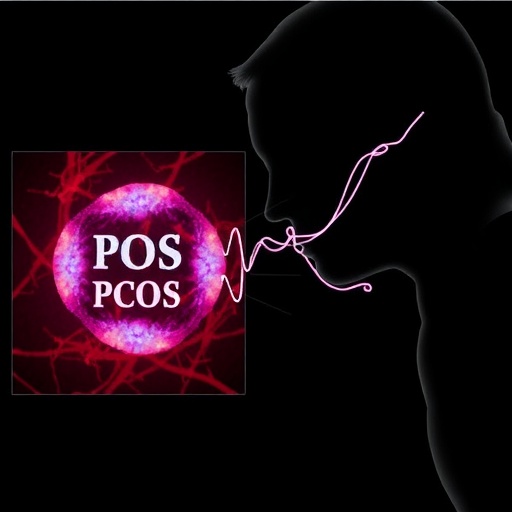In a groundbreaking study, researchers led by Han, C., Tang, X., and Lu, J. have introduced TMolNet, an innovative task-aware multimodal neural network designed specifically for molecular property prediction. As the quest for efficient and accurate methods for predicting molecular behaviors and properties intensifies, the integration of machine learning techniques with chemical sciences represents a burgeoning frontier. TMolNet stands as a testament to this evolving synergy, which not only aims to elevate the standards of predictive accuracy but also simplifies multimodal data handling in computational chemistry.
Molecular property prediction is critical in various fields, including drug discovery, materials science, and chemical engineering. Accurate predictions can significantly reduce the time and resources involved in experimental validations, a bottleneck that can delay research progress. In this context, traditional approaches often struggle to deal with the wide array of data types and structures inherent in molecular science. The advent of TMolNet addresses these challenges head-on by employing a multimodal neural network architecture that harmonizes diverse data inputs.
The architecture of TMolNet is particularly noteworthy. It combines vector representations of molecular structures with a variety of other data modalities, such as textual descriptions and experimentally obtained measurements. By utilizing a task-aware framework, TMolNet can dynamically adjust its processing techniques based on the specific prediction task at hand, optimizing its performance. This adaptive nature of the network facilitates the learning process across different molecular properties, enabling it to generalize effectively and minimize overfitting.
Core to the TMolNet’s design is its ability to handle various forms of data input simultaneously. Traditional models often require extensive preprocessing to convert diverse data types into a uniform format, which can lead to information loss and undermine prediction accuracy. In contrast, TMolNet effectively ingests multimodal data through a unified framework that preserves the unique characteristics of each data type. This capability not only enhances the model’s robustness but also simplifies the workflow for researchers who may not be experts in computational methods.
The team employed a comprehensive dataset for training TMolNet, spanning a range of molecular properties and library sources. By leveraging existing molecular databases, alongside novel compounds that the team experimentally synthesized, they ensured that the model was exposed to a broad spectrum of chemical behaviors. This breadth of training data is crucial, as it helps the network learn intricate relationships and patterns that might not be immediately apparent.
One of the standout features of TMolNet is its explanatory power. Unlike many deep learning models, which often operate as ‘black boxes,’ TMolNet incorporates mechanisms for interpretability. Researchers can visualize the contributions of different data modalities to the final predictions, providing insight into which facets of the input data are most influential. This level of transparency is vital in scientific applications, where understanding the rationale behind predictions can inform further experimentation and validation.
The team also meticulously evaluated TMolNet against state-of-the-art methods in the field, demonstrating its superior performance across a suite of benchmark tasks. Testing included comparisons with conventional machine learning models, neural networks trained on single data modalities, and even ensemble approaches. The results were unequivocal: TMolNet consistently outperformed its competitors, achieving higher accuracy rates while maintaining computational efficiency.
Moreover, TMolNet’s versatility extends beyond mere property prediction. Its architecture is advantageous for tasks such as molecular classification and compound generation. These capabilities position the network as a valuable tool not just for researchers in predictive modeling but for a wider audience within the chemical and pharmacological communities. The potential applications of TMolNet could revolutionize how researchers approach molecular discovery and development.
Sustainability is a pressing concern in modern research, and TMolNet also aligns with this ethos. By facilitating more accurate predictions, the model aids in the rational design and development of new materials and compounds, potentially minimizing waste and diminishing the environmental impact of chemical experimentation. A tool that enhances efficiency without compromising on ecological considerations is increasingly valuable in today’s world, especially as we strive for more sustainable practices.
Looking ahead, the creators of TMolNet envision further enhancements to their model. Future iterations may incorporate even more sophisticated mechanisms for data integration and interpretation, pushing the boundaries of what is possible in molecular property prediction. Continuous feedback from the research community will be essential in refining the model, ensuring that it meets the evolving needs of diverse chemical domains.
In conclusion, TMolNet represents a significant leap forward in the field of molecular property prediction. By harnessing the full potential of multimodal data and task-aware learning, it offers a comprehensive solution to existing challenges faced by researchers. As the complexities of molecular interactions become increasingly understood through computational methods, tools like TMolNet will play a crucial role in accelerating discovery and innovation across the vast landscape of chemical sciences.
This transformational development underscores the importance of interdisciplinary collaboration. The intersection of artificial intelligence and molecular science not only fosters advancements in technology but cultivates a new generation of scientists equipped to tackle the challenges of the 21st century. As research continues to unfold, TMolNet stands at the forefront of this exciting evolution, offering insights and capabilities that will undoubtedly shape the future of molecular research.
In a rapidly changing world, where the need for innovative solutions in healthcare, materials design, and environmental sustainability is paramount, the integration of machine learning into molecular prediction stands as a beacon of hope. TMolNet not only exemplifies the potential of technology in science but invigorates the field with newfound possibilities. As researchers worldwide begin to adopt this powerful tool, its impact will reverberate across various disciplines, paving the way for groundbreaking discoveries that benefit society as a whole.
As we watch these advancements unfold, it becomes clear that the future of molecular science lies in the ability to harness predictive technologies. TMolNet is undeniably a step in that direction, offering exciting possibilities for the next generation of chemical research.
The excitement surrounding TMolNet is palpable, and its implications could extend beyond the laboratory and into industries that depend heavily on reliable molecular data. The entire scientific community is eagerly watching, as its success could potentially inspire similar approaches across disciplines, leading to an era of enhanced productivity and creativity in scientific inquiry.
Subject of Research: Molecular property prediction using a multimodal neural network
Article Title: TMolNet: a task-aware multimodal neural network for molecular property prediction
Article References:
Han, C., Tang, X. & Lu, J. TMolNet: a task-aware multimodal neural network for molecular property prediction.
Mol Divers (2025). https://doi.org/10.1007/s11030-025-11350-z
Image Credits: AI Generated
DOI: 10.1007/s11030-025-11350-z
Keywords: molecular property prediction, multimodal neural network, task-aware framework, machine learning, computational chemistry
Tags: applications of TMolNet in materials sciencecomputational chemistry advancementsdata handling in chemical researchinnovative methods in drug discoveryintegrating diverse data types in chemistrymachine learning in molecular sciencesmolecular behaviors and propertiesmultimodal neural network for chemistrypredictive accuracy in molecular analysisreducing experimental validation timetask-aware neural networksTMolNet molecular property prediction





